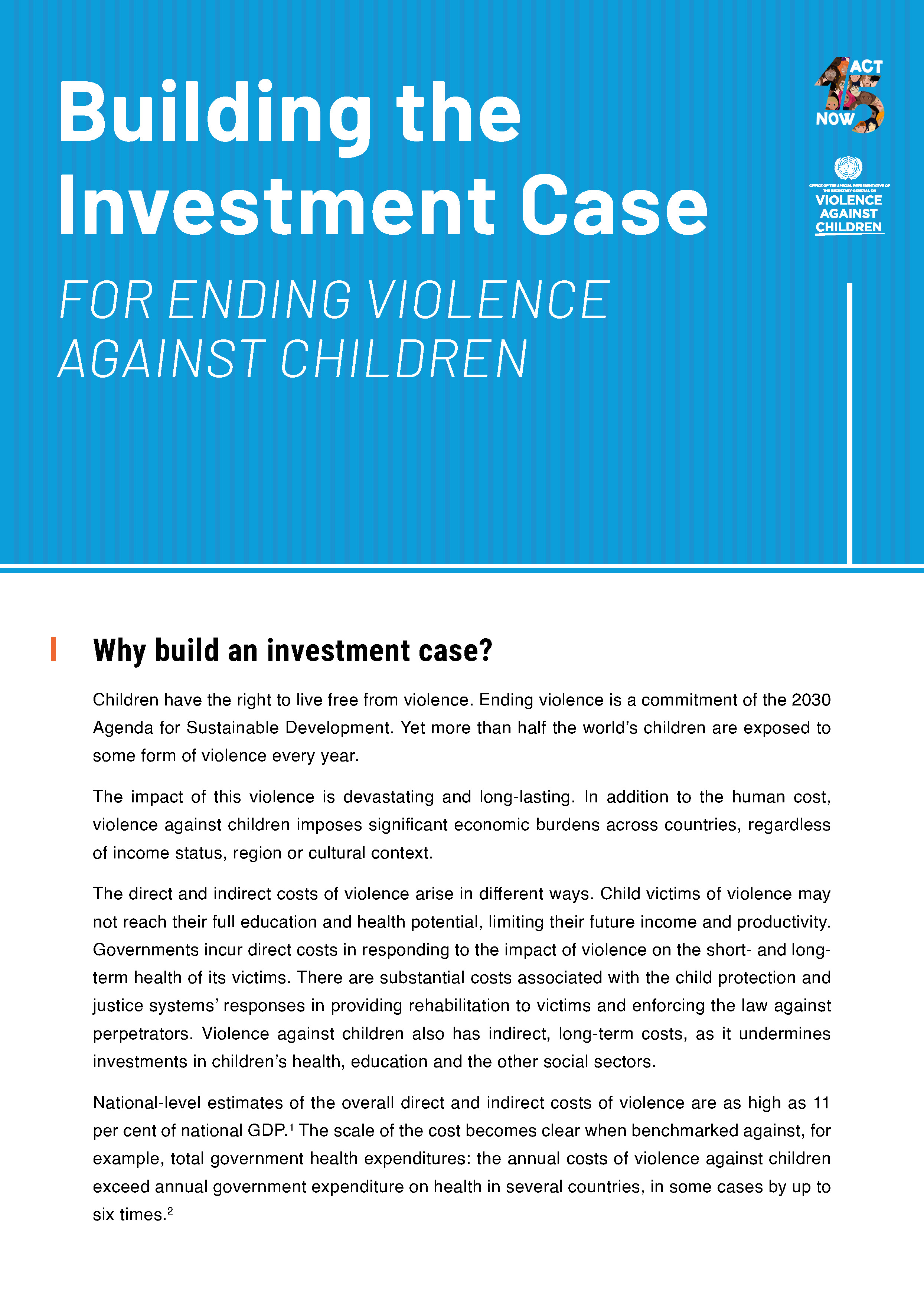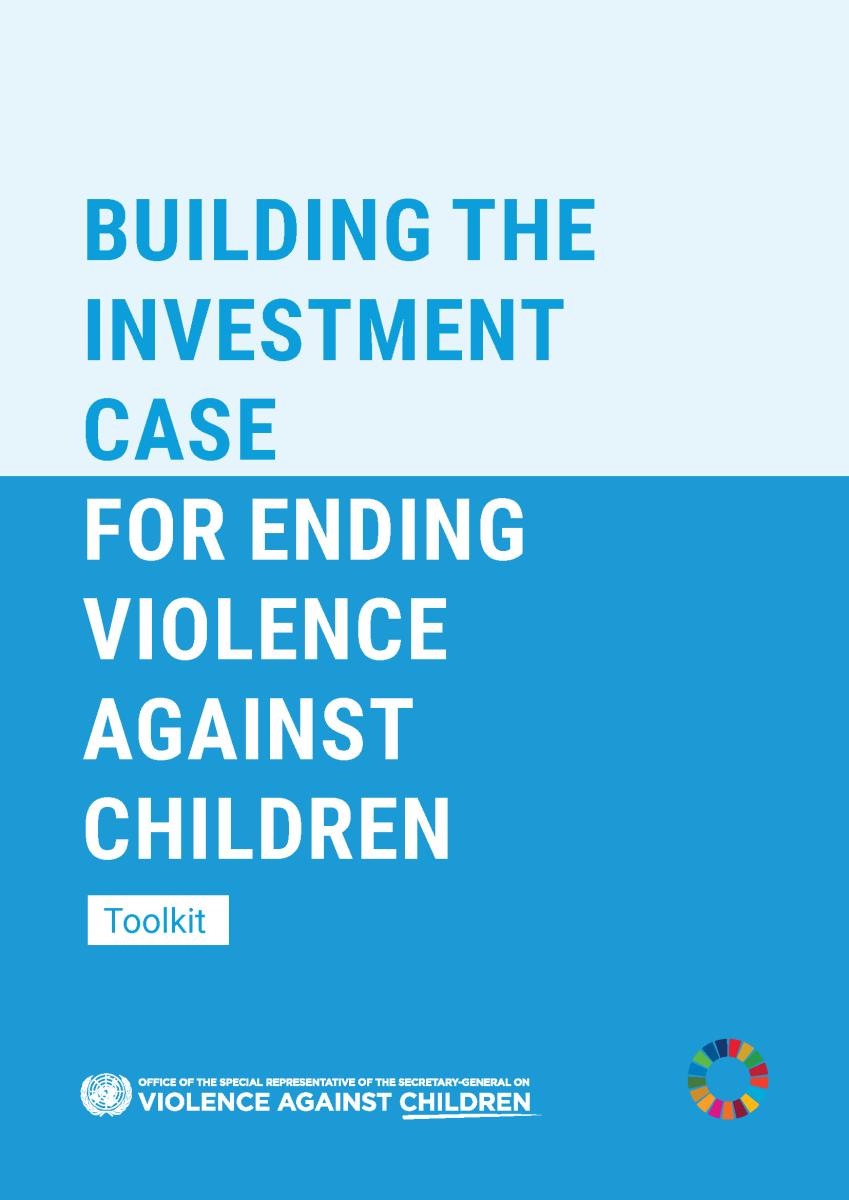Investment case
Building the investment case for ending violence against children
More than half the world’s children are exposed to some form of violence every year. The impact of this violence is devastating and long-lasting. In addition to the human cost, violence against children imposes significant economic burdens across countries, regardless of income status, region or cultural context. National-level estimates of the overall direct and indirect costs of violence are as high as 11 per cent of national gross domestic product (GDP). The scale of the cost becomes clear when benchmarked against total government health expenditures: the annual costs of violence against children exceed annual government expenditure on health in several countries, in some cases by up to six times.
Ending violence against children makes economic sense. Spending on child protection and well-being should be seen as an essential investment in building human capital and ensuring people-centred development across the lifecycle. Yet current levels of spending on the prevention and response to violence remain low.
Building an investment case for ending violence against children is a powerful tool to change that. It can demonstrate the significant social and economic returns that can be achieved by strengthening investments in cross-sectoral services for children and their caregivers. It supports advocacy to place child protection and well-being high on the political agenda, and to ensure it is duly embedded in national and local development plans.



